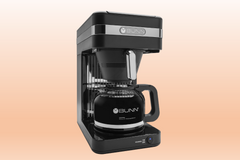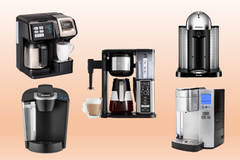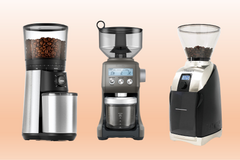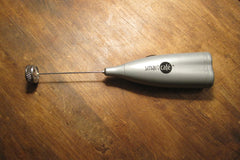When was the last time you really looked at your coffee label?
Most of us take a glance at the name of the coffee and call it good, not realizing that with just a few words, a coffee label can tell you absolutely everything about the beans in your bag.
The label on your coffee is a little snapshot story of the coffee’s life. It tells you where it’s from, how it was raised and what you can expect from it as a mature, roasted bean.
No two coffees are exactly the same, and what you find on the label will help you to identify the subtle, or not so subtle, differences.
We want you to get maximum enjoyment from your coffee experience, and that begins with understanding what all the words on a coffee label really mean.
Decoding the Name
Do you always go for the cholate and spicy notes of a Sumatra, or maybe a lighter, smoother Breakfast Blend?
Most coffee lovers have a favorite, or at least know what to reach for depending on the occasion or mood.
Did you know that the name of your coffee alone can tell you an incredible amount about what is in your cup?
Origin Coffees
Of all the information on a coffee label, this is the single most important identifier of what you can expect in terms of flavor and overall characteristics.
Much like the wine industry, coffee is grown in specific regions of the world. Each region produces coffee with unique characteristics due to differences in altitudes, soil and climate.
Almost all the world’s coffee is grown in a region termed the “Coffee Belt”.

The coffee belt is in the region of the world nestled between the latitudes of 25°N and 30°S, or for the sake of simplicity, between the Tropic of Cancer and the Tropic of Capricorn.
The coffee growing regions in the coffee belt include Central America, South America, Africa, Arabia, Asia and Islands such as Hawaii, Puerto Rico and Jamaica.
Each region is known for specific flavor notes and characteristics. For example, beans from Costa Rica are medium bodied with light notes of citrus and nuttiness, while beans grown in Kenya are fuller bodied with heavier floral and herbal notes.
Single origin coffees contain the name of the country or region that they were grown in, indicating the key flavor notes of the beans, which are then further enhanced by the roasting process.
Blended Coffees
Not all names on labels are as straightforward as origin coffees. Many coffees are roasted to become part of a blend. Coffee blends can contain beans from more than one region or estate, and each bean can be roasted to a different temperature to add greater complexity to the final product.
Blending also allows each roaster to add their own signature stamp to their coffee and highlight the characteristics of their best beans.
When choosing a blend, keep in mind the overall characteristics that you are looking for in your brew.
Examples of popular coffee blends include:
Breakfast Blend:
Breakfast blends often combine light and medium roast coffee beans. Occasionally, there will be a small amount of a dark roast added. These blends are generally lighter in flavor with notes of acidity, fruit and a touch of nuttiness.
The longer a coffee bean is roasted, the higher internal temperature it reaches. As the temperature of the bean increases, more of the caffeine is “burned off” so to speak. Therefore, lighter roasted coffee has a marginally greater amount of caffeine than a darker roast.
The bright flavors, smooth drinkability and extra caffeine boost combine in a breakfast blend to make the perfect blend to start your day.
Mocha-Java Blend:
Mocha-Java is one of the most popular coffee blends. From a coffee lover’s perspective, it embodies everything that a great coffee should be and is a favorite of coffee aficionados around the world.
Mocha-Java combines beans from the Island of Java, with mocha beans from other regions, typically Yemen or Ethiopian. The blend is a mixture of bright and fruity with rich and smooth.
Espresso Blend:
The espresso blend is where many coffee roasters let their experience shine. With this blend, it is more about the unique flavors that the roaster is looking to create with different blends of beans. Espresso blends make for great cups of brewed coffee; however, they are usually created with a specific purpose in mind, and that is the perfect shot of espresso.
When an espresso blend is created, the roaster is looking for a blend of sweetness, mild bitterness and full body. The blend should also create a thick, creamy crema when espresso brewed and hold up to milk in café style espresso drinks.
Black and Tan:
The black and tan is the best of both worlds. It is a blend of light roast beans, combined with darker roasted beans to create a blend that is balanced between acidic fruitiness and smooth mellow notes of spice and chocolate.
Filter Roast Blends: This is a term used to describe blends that have been created specifically for filter brewing techniques, as opposed to the extraction method of making espresso.
Just like espresso blends, a roaster can create and build their reputation by choosing just the right blend of beans and roasting them to bring out their best qualities. Filter roast blends tend to be lighter and fruitier than the darker espresso roast blends. 
Learning Your Coffee’s Story
While there are plenty of people that stop reading the coffee label once they identify the type of coffee in the bag, the entire life of the bean can be found on the rest of the label and it makes for a very interesting story.
When you take a trip to the grocery store, or your local farmer’s market, do you like to know where your food came from, how it was farmed and that it is at its peak of freshness?
Coffee is no different, and a thorough, and honest, coffee label can answer these questions for you.
Here are the main things to focus on when reading the label on coffee packaging:
Farmer or Producer:
Not all coffee companies provide this information on their label, but listing the farmer of producer is a great way of giving credit where credit is due. Coffee farmers are some of the hardest working people on the planet. As part of the coffee industry, we at Nomad feel that it is important to value, respect and trust our farmers, and we do that by maintaining positive working relationships and acknowledging that they are a big part of the reason that our coffees taste so good.

Varietal:
Coffee beans come from the fruit grown primarily on two different types on shrubs. Like other plants, coffee shrubs have scientific names. In this case, those names are C. Arabica, which produces arabica beans and C. Canephora, which produces robusta beans.
There are other types of coffee shrubs, but they are far less common than these two and generally either don’t produce quality fruit, or produce it too slowly.
Coffee varietals are specific types of beans that result from hybrids or mutations of these two plants. There is a selection of varietals that are most commonly found in the modern coffee drinker’s cup.
Some examples of varietals include:
- Bourbon
- Catimor
- Catuai
- Caturra
- Columbia
- Geisha
- Ethiopian Heirloom
- Typica
- And Pacas, just to name a few
Why is the varietal important?
The varietal determines the natural characteristics of the bean that will be highlighted in the roasting process. It is important to know that while you may love your favorite medium roast, that same roast on another varietal can taste completely different.
Roast:
Once you have the origin and varietal picked out, how the bean is roasted determines the characteristics and notes that shine through in the finished product.
In the simplest of terms, roasts come in three degrees: light, medium, and dark. And what’s most important to remember is that within these 3 categories are different levels of each.
Even just one to two minutes in a roast cycle can make an incredible difference in the flavor and quality of your coffee.
- Light Roast: These coffees are roasted to an internal temperature of 350°-400°F and have a light brown to cinnamon color. These coffees are typically more acidic with prominent notes of fruit. You can find light roasted coffees under the names of Light City Roast, Half City Roast, and Cinnamon Roast.
- Medium Roast: Medium roast coffee beans are heated to an internal temperature of 410°-430°F. Just slightly darker than a light roast, a medium roast coffee will be more balanced and with notes of spice. You can find medium roast coffees under the names City Roast, Regular Roast, and Breakfast Roast.
- Medium Dark Roast: There is a narrow temperature window of 435°-445°F required to produce the perfect medium-dark roast coffee, which will be noticeably darker and begin to take on a rich chocolate color. At this stage of roasting, the acidity really begins to mellow out and is replaced with a spicy nuttiness that can balance on the edge of bittersweet. You can find medium-dark roast coffees under the names Full City Roast and Vienna Roast.
- Dark Roast: At this point, the coffee bean has been roasted to 465°-485°F and takes on a very dark, sometimes almost black, color. Dark roasts are smooth, but with hints of smokiness and caramelization. This is definitely the “meatier” of the coffee roasts. You can find dark roasts under the names French Roast, Italian Roast, Spanish Roast, and Espresso Roast.

Process:
When the coffee fruit is picked from the shrubs, the bean nestled inside is extracted in one of two ways. Wet processing or dry processing, also called natural processing.
Wet processing involves the use of water to wash away the fruit from the bean, whereas dry processing is leaving the fruit on bean and allowing it to sit out and dry, under the natural heat of the sun, until the fruit has degraded or become dehydrated and can easily be shucked away.
There are of course different schools of thought on which processing method is best. For large commercial operations, it makes sense to wet process because it is faster and more cost effective.
On the other hand, wet processing requires special equipment that not all coffee farmers have access to. While natural processing is more labor intensive, it also allows the bean to absorb and maintain more characteristics of the fruit.
Natural processing, in our opinion, results in a higher quality bean and is gentler for the environment.
Taste Notes:
We are firm believers that you should experience a variety of coffees. After all, how do you know your true favorite if you have only ever tried one or two in your entire life?
Coffee is a complicated brew, with hundreds of complex flavor notes. To the discerning palate, coffee is far more complex than any wine.
A thorough coffee label will include a description of what flavor notes and characteristics that you can expect from the combination of varietal and roast to help guide you through your coffee tasting adventures.
Date Stamp:
Once you have picked the perfect coffee, the next most important thing that you should do is look for a date stamp. The date stamp might also be a date sticker, but either way, make sure that your coffee has one.
The date stamp should either indicate the date that your coffee was roasted or the date that it should be used by for maximum freshness. In some cases, you will see both.
As a rule, coffee begins to reach its peak freshness about two to three days after roasting and then begins to decline in freshness between ten to fourteen days after roasting.
You shouldn’t need to randomly try different coffees to find the flavor components that best suit your tastes. A good coffee label will contain all the components that you need to help guide you to the perfect coffee.
Leave the hard work to us, while you enjoy the result!






